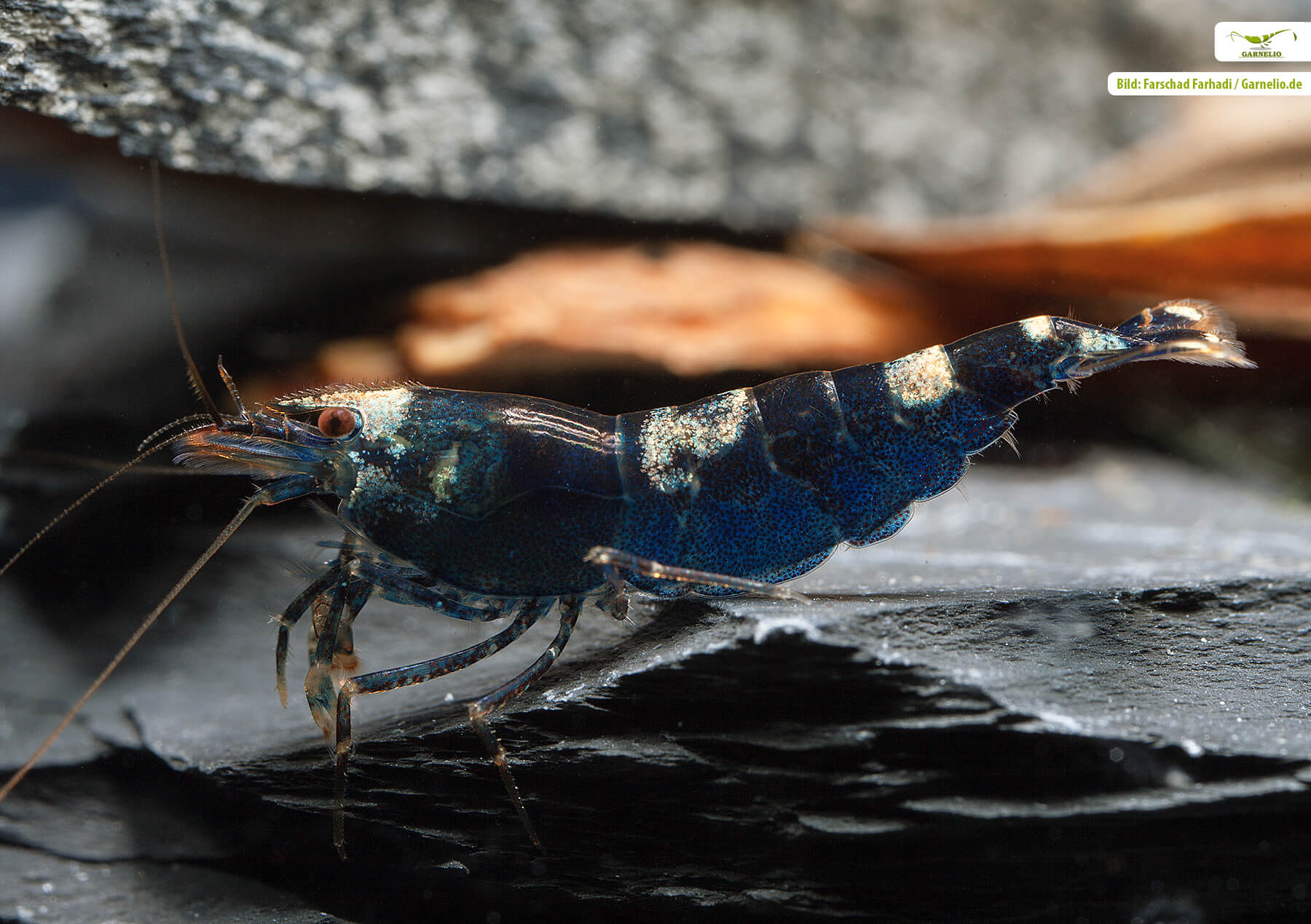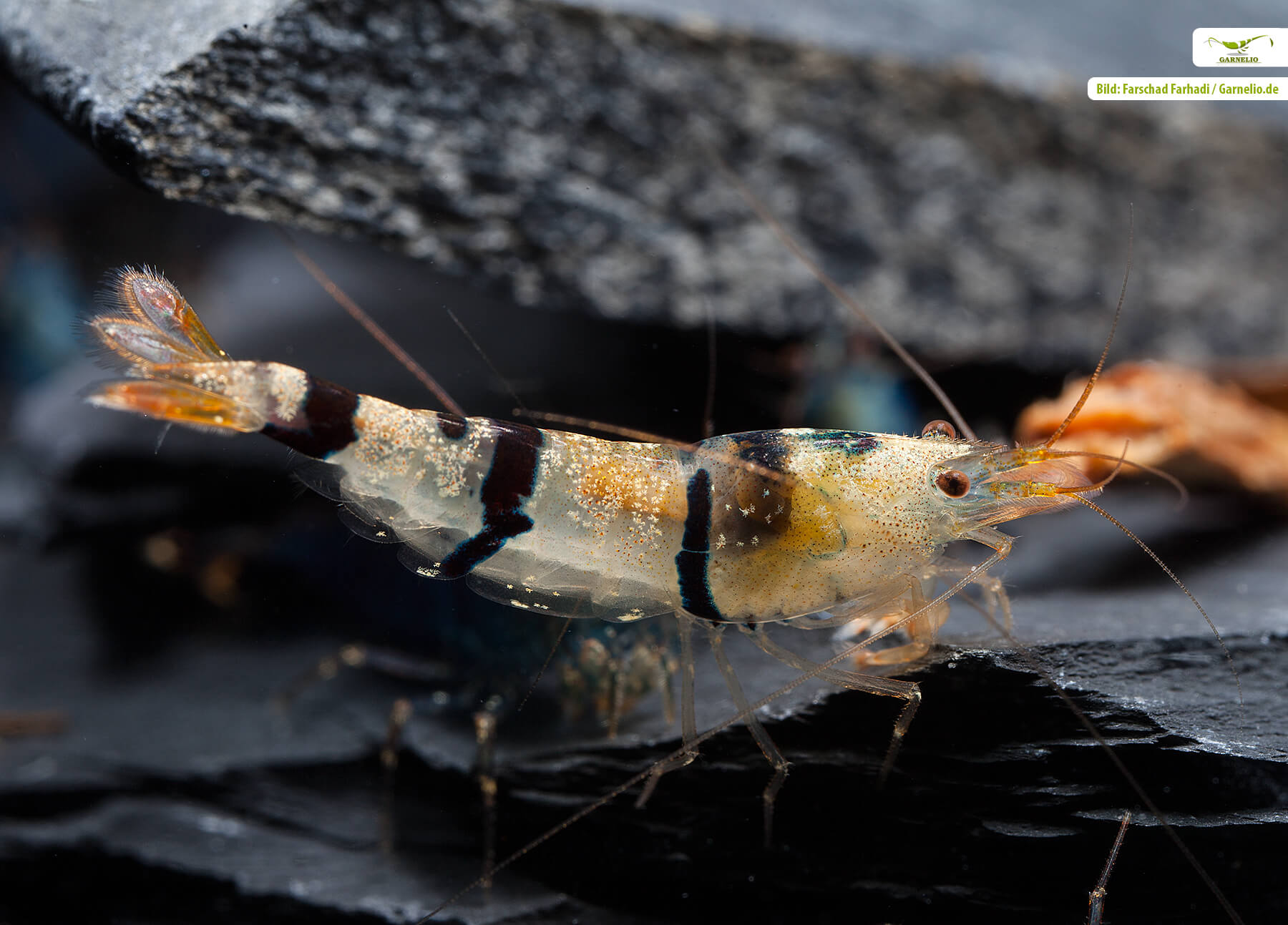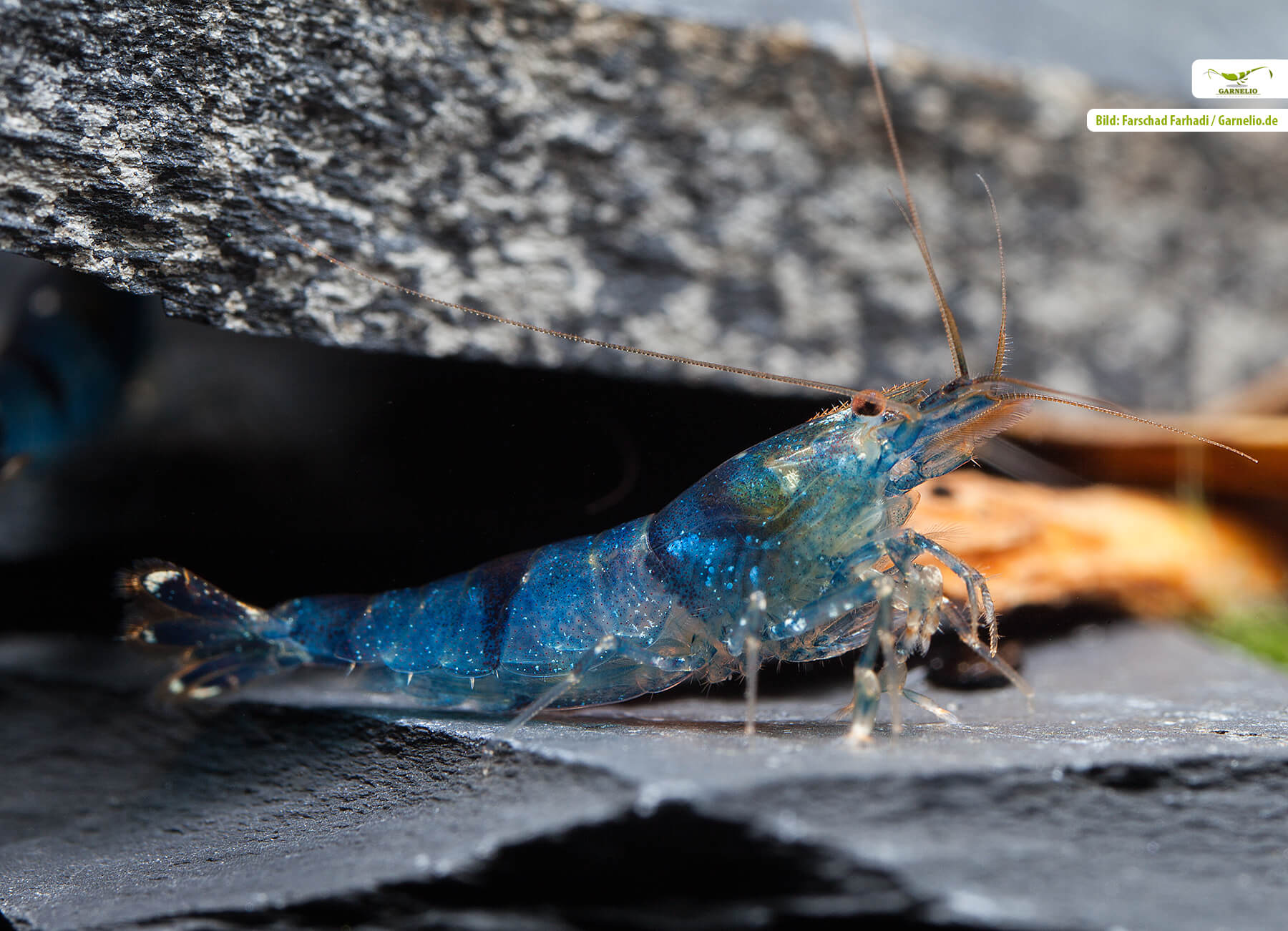Regular work on the shrimp aquarium
Regular work on and in the aquarium with invertebrates
In contrast to a pure fish aquarium or a plant tank or pure aquascape, in an invertebrate aquarium our small fellow inhabitants do a lot of work for us. Shrimps and snails, for example, are very happy to take care of algae deposits and biofilms on the glass panes and on decoration and plants, and even small amounts of dead plant remains or even isolated dead animals usually do not spoil the picture for long. Nevertheless, there are of course some tasks that should not be neglected, especially with aquariums that are not only used for breeding, but also to bring a certain decorative aspect to a room.

We distinguish between daily, weekly and monthly tasks.
Daily tasks
Control - checklist
Of course, the daily control look into the aquarium is obligatory. Are the invertebrates behaving normally? Do they look different? Are there any dead animals? Is the filter running? How do the plants look like? Are there any food remains that have not been eaten? Is there still enough liquid in the oxydator (if you use one)? Is the CO2 system running?
Remedy
Dead animals or dead plant remains as well as yellowing leaves should be removed, so that the water values do not deteriorate and also so that bacteria in the open water do not find too much food and the germ count increases excessively. For the same reasons, uneaten food should also be removed from the aquarium after a few hours at the latest. If the filter stops running or the flow is greatly reduced, the sponge should be thoroughly washed out. If the filter wheel is blocked, it is necessary to remove the blockage. If the oxydator is empty, it must be refilled. The CO2 supply should also be restored, of course, once the bottle is empty.
Feeding
Feeding is also done daily or every other day - always only enough so that everything is eaten within a few hours. If you have brown autumn leaves in the aquarium (which we recommend for every tank with invertebrates), especially in the shrimp aquarium several food-free days per week do not hurt.
Daily fertilizer
If you use a daily fertilizer and/or a carbon fertilizer, this is of course also added.

Weekly work
Fertilization and water changes
If, on the other hand, you fertilize on a weekly basis, the required amount of fertilizer is applied once a week, preferably after the partial water change, which is also due once a week. Depending on the stocking density, you should change between 10 and 50% of the water volume in the aquarium. To do this, you should suck out the water into a bucket and at the same time go through the substrate with the mulm vacuum cleaner, especially at the feeding area. This prevents the formation of puddles in the first place. Before pouring away the water in the bucket should be carefully examined for possibly sucked off shrimp babies! If you protect the suction hose with a piece of nylon stocking, the danger of sucking in shrimp babies is reduced, but you will not get the mulm as well. If necessary, the fresh water is adjusted in terms of the values (if you work with osmosis water and hardening salt) or treated with water conditioner if necessary. Important: Conditioner also draws fertilizer out of the water - so if you add fresh water with conditioner to the aquarium, you must wait 24 to 48 hours before the next shock fertilization!
Plant care
Once a week the plants are also cut back, stem plants are trimmed and possibly replanted and cushion plants such as mosses or Riccia are taken back and reattached.
General care
Now is also the time to check the fall foliage, take out any leaf skeletons that have been eaten away and add new brown leaves. It also doesn't hurt to lift deco such as roots and stones once a week and vacuum out the mulm underneath. Has the substrate that is rising towards the back made its way to the front aquarium glass? Now would be a good time to bring it back into shape with a spatula. Areas of a different color (such as pathways designed with light sand) should also be carefully vacuumed once a week to maintain their color and prevent these zones from mulching.
Cleaning discs
Neritids such as racing snails, limpets or even staghorn snails usually keep the panes nice and clean, but you should still clean the front pane with a window cleaner at least once a week to ensure a clear view into the aquarium. Since especially juvenile shrimps like to graze the fine coating on the pane, you can consider whether the side panes and the back wall have to be clinically clean or whether you leave the coatings there for the sake of the animals.

Monthly work
Check water values
At least once a month the most important water values like GH, KH, nitrite, nitrate and the pH-value should be controlled - in case of abnormalities of course much earlier!
In case of gross deviations you should reconsider your feeding behavior, adjust the amount of fertilizer if necessary and possibly increase the amount of water changed weekly.
Refill dropchecker
Ifyou are using a CO2 continuous test (Dropchecker), you shouldreplace the indicatorfluid every four to six weeksso that the display functions reliably.

für Anfänger wäre ausführlicher vielleicht besser
Hallo
Meine frage muss man das Wasser bei allen Garnelen aufsalzen oder geht normales Leitungswasser
sehr gut
danke für die schönen Aufnahmen der feinen Tiere. Auch für die Hilfestellung was ist z u machen finde ich gut. Die haltung dieser Tiere ist nicht einfach dehalb gute Beratung für uns.
Frage zum futter
Der block ist gut und informativ
Hab nur eine Frage ich habe bereits das garnelen mainfutter benönnitge ich noch dad Protinfutter und das extra Futter die fächergarnele und ringlhand garnelen
Möchte mir diese nach und nach holen habe bisher nur fische im aqarium
Danke
Versuch, auf die wichtigesten Fragen in den Kommentaren zu antworten ...
Hallo Andreas,
das kommt ganz auf die Wasserwerte an, die bei dir aus der Leitung kommen. Hast du sehr weiches Wasser, kannst du Weichwassergarnelen auch in Leitungswasser halten. Garnelen, die hartes Wasser brauchen, tun sich damit allerdings dann eher schwer. Für sie sollte sehr weiches Wasser dann mit einem geeigneten Präparat aufgehärtet werden. Ist dein Leitungswasser hart, ist es für Garnelen aus weichem Wasser nicht gut geeignet, da ist es dann besser, auf Osmosewasser + Mineralsalz zurückzugreifen. Welche Garnelen welches Wasser brauchen, siehst du in den jeweiligen Beschreibungen im Shop hier.
Hallo Saskia,
Fächergarnelen brauchen Staubfutter, die fangen mit normalem Garnelenfutter nicht viel an. Ringelhandgarnelen brauchen mehr Proteine als Zwerggarnelen, für sie ist das Proteinfutter also eine sehr sinnvolle Ergänzung.